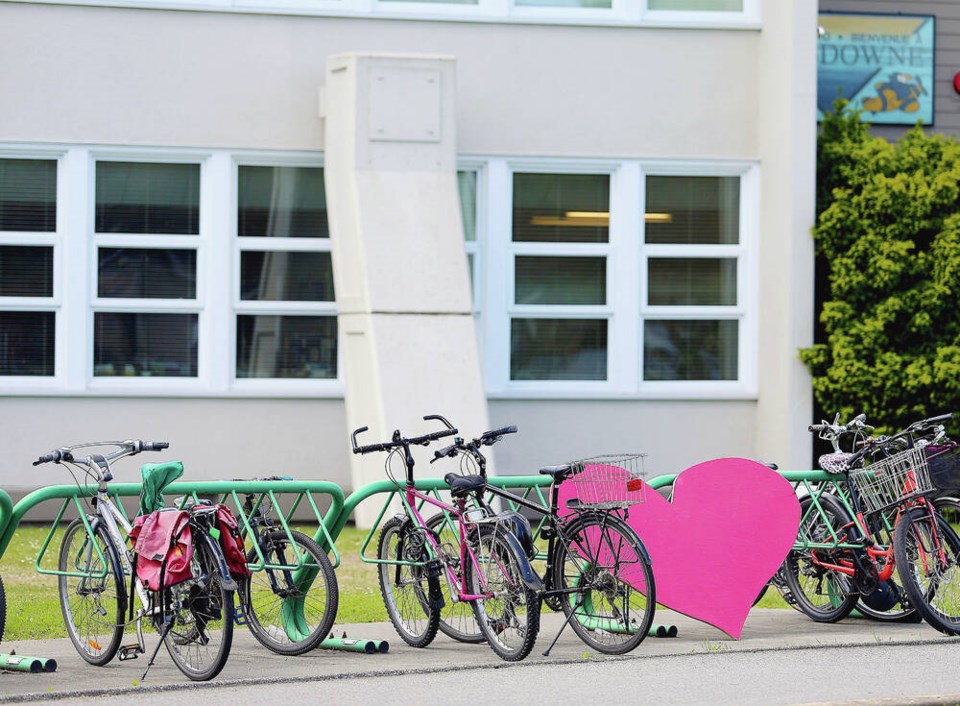When B.C.’s public schools reopened on Sept. 6, there was hardly time for parents, teachers and administrators to sit down and ask: “What happens now?
As kids streamed in the doors, it was time to take stock and quickly decide where to pick up the pieces.
Prior years had seen teachers reasonably assured that the majority of the incoming class had completed, or nearly completed, the previous year’s requirements.
That certainty no longer existed for September 2022.
The first COVID-19 case in Canada was reported on Jan. 25, 2020. By March 2020, many provinces closed schools, prompting boards across the country to shift to a variety of remote learning options.
B.C. was more conservative and kept schools open, which, even then, resulted in a series of highly publicized “functional closures” for a variety of reasons (staff shortages, kids staying home, etc.)
By distributing technology and other resources to students, and by developing a variety of contingency plans in light of evolving information about COVID, public education in B.C. “carried on” — sort of.
All the while policy makers, administrators, teachers and parents found themselves standing on the shifting sands of evolving scientific discoveries about the effects and transmissability of this new virus.
As writer and educator Paul Bennett, director of Schoolhouse Institute in Halifax and author of The State of the System: A reality check on Canada’s Schools, wrote in his 2020 book, “School disruptions have exposed the fragility of the modern, centralized, bureaucratic organized education public education .. thrust into the COVID-19 pandemic crisis, what emerged was emergency triage learning.”
So now the kids are back in school in Canada. Some have had access to in-class or online learning, some have not. Some have had the benefit of neighbourhood organized “tutor sessions;” others have watched a lot of TV.
A May 2021 CBC investigation, based on responses from nearly 9,500 teachers in eight provinces, revealed that three out of four respondents were behind schedule with their curriculum, and more than half reported students were not meeting the expected learning outcomes.
One thing is certain — given that previously accepted classroom-based models of teaching and learning have been disrupted, teachers are looking for new models.
Normal classroom student composition always assumed some degree of consistency about class progress, but that is no longer a safe assumption.
To some teachers, post-pandemic education is looking more like a rescue mission — one that needs to begin by putting the pandemic generation back on the path to sound education.
But alongside all this, good news is emerging about post-COVID effects on education at all levels.
According to a Brookings Institute Report by Emiliana Vegas and Rebecca Winthrop, “The COVID-19 pandemic has forced education innovation into the heart of almost every education system around the globe.”
The researchers were also able to identify rising public support for public education. “There is newfound public recognition of how essential schools are in society and a window of opportunity to leverage this support for making them stronger.”
And now we arrive at what is possibly the most significant and yet seemingly overlooked factor in post-COVID public education — a revised and updated approach to teacher preparation, both for “newbie” teachers but more importantly for experienced teachers who are sometimes less comfortable recognizing the demands the post-COVID era is already placing upon the system.
Teachers are in an unprecedented situation in which they must make up for substantial loss of instructional time from the previous school year and teach the current year’s curriculum at the same time.
Teachers will need training, coaching and other means of support about how best to get this done.
As just one example, it will be critical for teachers and students to consider where each student is now, identify where he/she needs to be, and to develop plans to bridge these gaps. This process is at the core of formative assessment.
Educators should plan for the integration and continuous implementation of formative assessment processes throughout the school year to help them to make real-time instructional adjustments to meet individual learners where they are, not, as in times past, “where they ought to be.”
The start of each new unit presents opportunities to collect evidence that can be used to plan the most efficient and effective use of instructional time.
Pre-assessments should reassure students that they should not expect to get many of the questions correct and that the goal is to find “the edge” of a student’s learning as a point from which to move forward.
Think about reassembling post-COVID public education like this: Kintsugi is the Japanese art of putting broken pottery pieces back together with gold — built on the idea that in embracing flaws and imperfections, you can create an even stronger, more beautiful piece of art.
Geoff Johnson is a former superintendent of schools
>>> To comment on this article, write a letter to the editor: [email protected]



